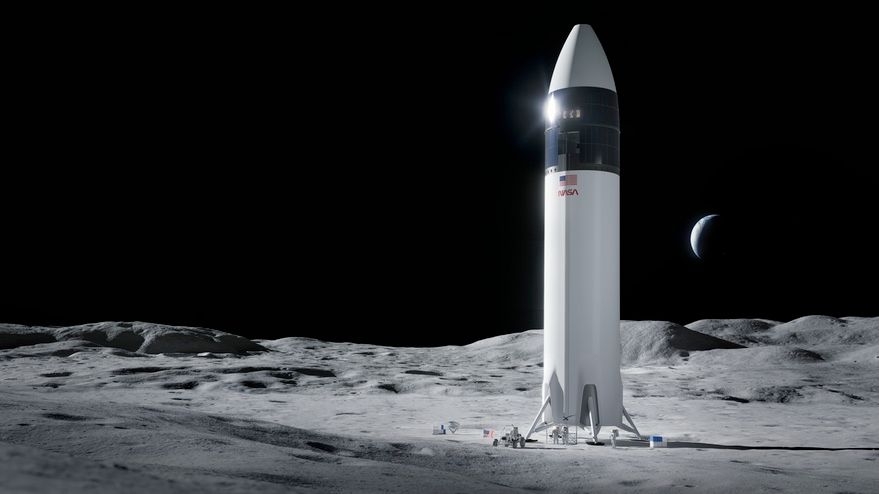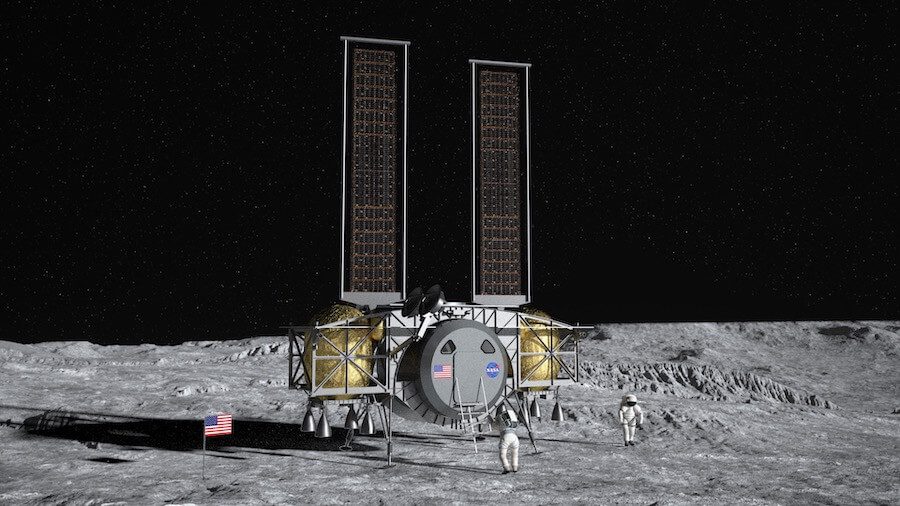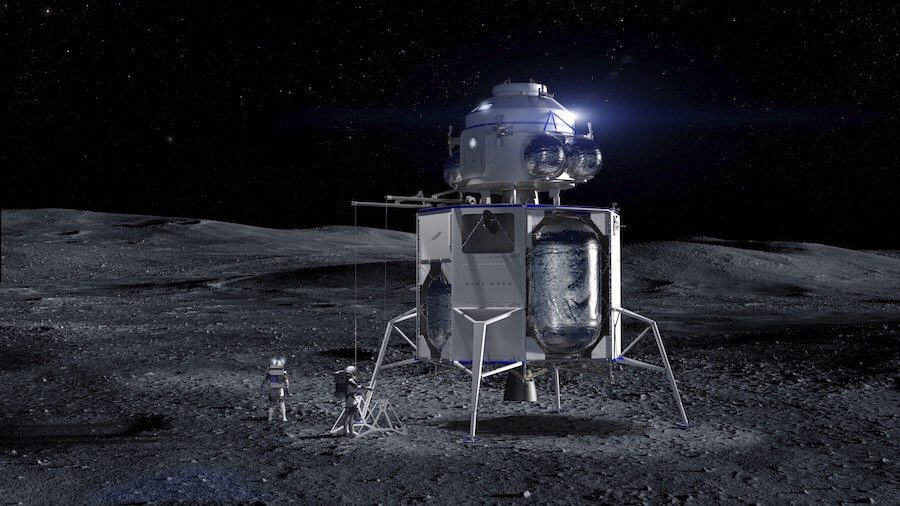NASA has outlined the Project Artemis plan to land humans back on the Moon. Having already selected SpaceX to supply its Starship-based lunar lander, NASA has released more detail into the public domain. The plan involves two Starship launches initially into low Earth orbit (LEO) – one is a fuel tanker to refuel the first – and then the launch of the crew via SLS/Orion to the Moon for the early landing attempts including Artemis III.
The first launch will be the Starship lunar lander to LEO. A second fuel tanker Starship will also be launched to refuel the Starship lander, which will transfer itself to the Moon. NASA will then launch an SLS with the human-carrying Orion to the Moon. There it will dock with the Starship lander in lunar orbit. The crew will transfer to it and perform a lunar landing.
After a period of excursion on the lunar surface, the landing crew will launch to lunar orbit where the craft will again dock with Orion. Orion will then detach to return the crew back to an Apollo-like re-entry and splashdown on Earth. The Starship lander would be discarded in lunar orbit.
Critics note that the weakness of the plan is the untried in-orbit refuelling of cryogenic propellants, plus the “boil off” losses that will be incurred during the flight. The Apollo lunar excursion module (LEM) used storable hypergolic propellants which, while less propulsively efficient, did not have significant storage or boil-off issues and which, under the Apollo plan, did not need refuelling.
NASA had originally envisaged that two lander types would be selected to be built at least to prototype stage, with the landing craft officially dubbed the Human Landing System (HLS). But financial and timeline pressures meant that only SpaceX was selected in April 2021 to build the first landing craft. This decision was to the chagrin of the Blue Origin-led team which was, at one time, favourite to win the competition.
Under pressure from the US Congress, NASA has now agreed to fund a second lunar lander design which both Blue Origin and Dynetics are likely to bid to build. In addition, Northrop Grumman is also reported to be weighing up whether to bid. This second design will be used for later astronaut landings, transferring crew to and from the lunar surface from the planned lunar Gateway space station in a very high lunar near-rectilinear halo orbit. NASA will issue a draft solicitation in the coming weeks for its “Sustaining Lunar Development” second lander competition.
Orion’s European ATV-based service module is too small to move to and from a low lunar orbit and is designed to operate in high lunar orbits similar to where the Lunar Gateway space station will be. Thus, either a stretch to the Orion service module or, more likely, a transfer stage will still be needed for this lunar lander, if it is to use the Lunar Gateway as an orbiting waystation.
Comment by David Todd: NASA has done this all wrong. It may argue that its planned second large lunar lander design will at least provide some back-up in case of a technical issue with the SpaceX design. But actually it is pointless. Such is the size of the SpaceX Starship-based lunar lander and its cargo-carrying capability that, if it and its landing plan works, it makes the Lunar Gateway “way station” and the second large lander pretty much redundant. If NASA wants to get its astronauts back onto the Moon quickly, i.e. ahead of China, for simple human exploratory missions, it should build a much simpler and smaller lunar landing craft – a sort of “son of LEM” – using storable propellants and with a transfer stage as already noted. It is not too late to do this if it starts now.
Larger cryogenic-type landers should be left for later when the technology is fully proven, and when they really will be needed for the development of long-term lunar surface infrastructure. As such, it is doubtful if a cryogenic landing craft will be ready for the planned Artemis 3 first human lunar return landing mission.
In conclusion, NASA should build a simpler, storable propellant type of lunar lander with a transfer stage for the Artemis III mission, but still develop the larger SpaceX Starship-based lander as its successor. The Gateway space station should be repurposed as an LEO space station to replace the International Space Station (ISS).








